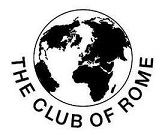Fifty years ago, the Club of Rome was founded; in its own words ‘an organisation of individuals who share a common concern for the future of humanity and strive to make a difference…. Our mission is to promote understanding of the global challenges facing humanity and to propose solutions through scientific analysis, communication and advocacy.’ The club still warns us, and also tries to encourage. Like in their latest book ‘A finer future, Creating an economy in service to life’ (2018). Is the future one of catastrophe, or one of empowered entrepreneurs and innovators building a world that works for everyone?
At the occasion of the foundation of the Club of Rome, 50 years ago, Wouter van Dieren and Eric-Jan Tuininga compiled a collection of contributions of ’50 witnesses of events since that first memorable period,’ published by Schuttelaar & Partners. This is a somewhat enlarged version of my contribution to this volume.
 Major changes
Major changes
I saw again Dennis Meadows, one of the authors of the sensational book Limits to growth (1972), in 2006 at a symposium to the honour of Wouter van Dieren in the Museum for the Tropics in Amsterdam. The man was crisp as ever, still young. And he had a clear message: we weren’t as stupid as people suggest nowadays, as a matter of fact we are still right.
That was a pity, this last message, for history has amply proven wrong Limits to Growth. Take mercury. Limits to Growth calculates that mercury will be depleted in 13 years, i.e. in 1985. New discoveries of mineral resources will not be sufficient – nothing can withstand exponential growth. Within a few years, these would be depleted as well. If one looks at the numbers for mercury of the US Geological Service these days, one will find a proven reserve almost as large as that in 1972, because of new finds and upgrading of reserves. But now, this amount will be sufficient for 70 years of use. In other words, we now use 80% less mercury. Mankind used to deploy mercury in thermometers (what an outdated technology now), in amalgam tooth fillings, as an antifungal agent in latex paints, and in the electrolysis of table salt. We stopped doing so, or to a large extent; some of the new technologies even proved to be better than the old ones. The Club of Rome, with its Limits to Growth report, has contributed a lot to those quick substitutions. Their warning has been the grandeur of their project, something that Dennis Meadows can be proud of.

Club of Rome: early warning
Back then, I was thrilled by the contents of the pocket book, like millions of others. This book, together with the course in environmental science that someone lent me, was decisive for the rest of my life. But it did not depress me, like some who were convinced that the end of times was nigh and that the Earth would soon collapse. This proved to be the wrong state of mind – as always, when people think that they have found the absolute truth; or have to fight the absolute evil, like nuclear power back then, or genetic modification nowadays. We need to formulate problems clearly and not look the other way. That is what the environmental movement did against much resistance in the 1970s, that incredibly polarized era. A process that repeats itself these days, around the problem of climate change.
The immense success of the Limits to Growth report, that extends into our times, therefore exists of clear formulation of where a society would be heading that did not steer away from such dangers. It released a resilience that still benefits us. The Australian Paul Gilding formulated this very clearly: never underestimate mankind’s stupidity – but then, never underestimate its resilience, that is released when it is almost too late. ‘Almost’ too late: that’s why early warning is so important. And that’s exactly what the Club of Rome brought about.
Moot questions
Or… is it too easy to take Limits to Growth literally, and to criticize them on predictions that have not come true? In the same volume, Jan Paul van Soest formulates as the central message of the book: all things are connected, we should try to understand the whole. ‘Yes, a lot has changed and improved, we have made giant technological leaps, directly visible pollution has been halted, efficiency improvements have worked out well. But then, from a systemic point of view the model of a growing world population with an expanding economy has not essentially changed. And therefore, we are heading towards 4 degrees global warming by the end of the century, and a collapse of crucial ecosystems.’ I disagree, by the way, with Van Soest’s implicit assumption that the Earth is a closed system. But his words show that the central question posed by the Club of Rome is still moot: do we head towards a catastrophe? Or to a world for everyone?
Interesting? Then also read:
Economists, listen: the Earth is NOT a closed system!
Wrong question: can we decouple environmental effect from GDP growth?
Gaia, and James Lovelock’s gentle revenge
